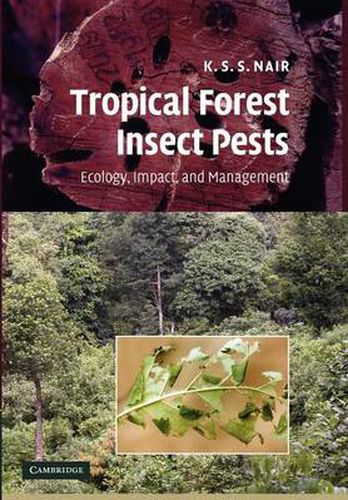Readings Newsletter
Become a Readings Member to make your shopping experience even easier.
Sign in or sign up for free!
You’re not far away from qualifying for FREE standard shipping within Australia
You’ve qualified for FREE standard shipping within Australia
The cart is loading…






Tropical Forest Insect Pests, first published in 2007, promotes a better theoretical understanding of pest population dynamics, and causes of forest insect outbreaks in the tropics. Covering pests of both natural forests and plantations, it examines the diversity of tropical forest insects; their ecological functions; the concept of pests; and the incidence of pests in natural forests, plantations, and stored timber. General issues on which foresters and forest entomologists hold strong traditional views, such as the severity of pest incidence in plantations vs. natural forests, in plantations of exotics vs. indigenous tree species, and in monocultures vs. mixed plantations are discussed. The final section looks in detail at specific insect pests of the common plantation tree species across the tropics, with recommendations for their control. This is a comprehensive resource suitable for graduate students and researchers in forestry and tropical forest entomology, and for forest plantation managers in the tropics.
$9.00 standard shipping within Australia
FREE standard shipping within Australia for orders over $100.00
Express & International shipping calculated at checkout
Tropical Forest Insect Pests, first published in 2007, promotes a better theoretical understanding of pest population dynamics, and causes of forest insect outbreaks in the tropics. Covering pests of both natural forests and plantations, it examines the diversity of tropical forest insects; their ecological functions; the concept of pests; and the incidence of pests in natural forests, plantations, and stored timber. General issues on which foresters and forest entomologists hold strong traditional views, such as the severity of pest incidence in plantations vs. natural forests, in plantations of exotics vs. indigenous tree species, and in monocultures vs. mixed plantations are discussed. The final section looks in detail at specific insect pests of the common plantation tree species across the tropics, with recommendations for their control. This is a comprehensive resource suitable for graduate students and researchers in forestry and tropical forest entomology, and for forest plantation managers in the tropics.